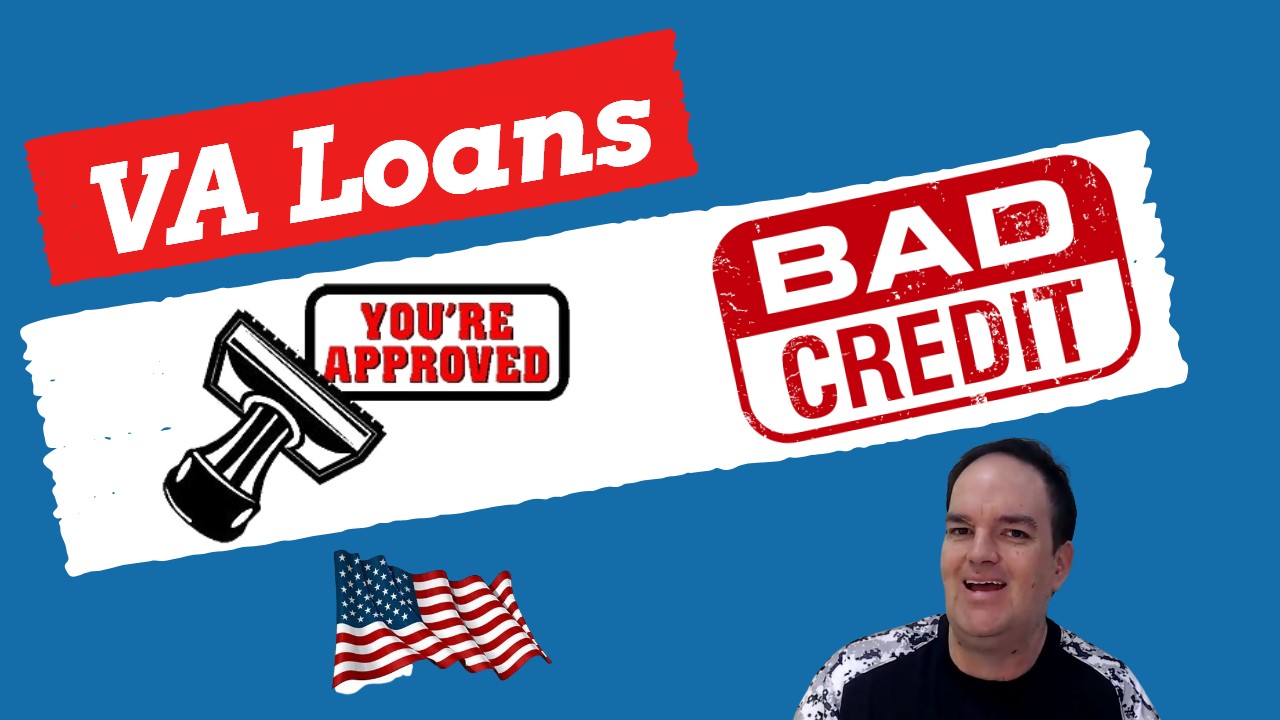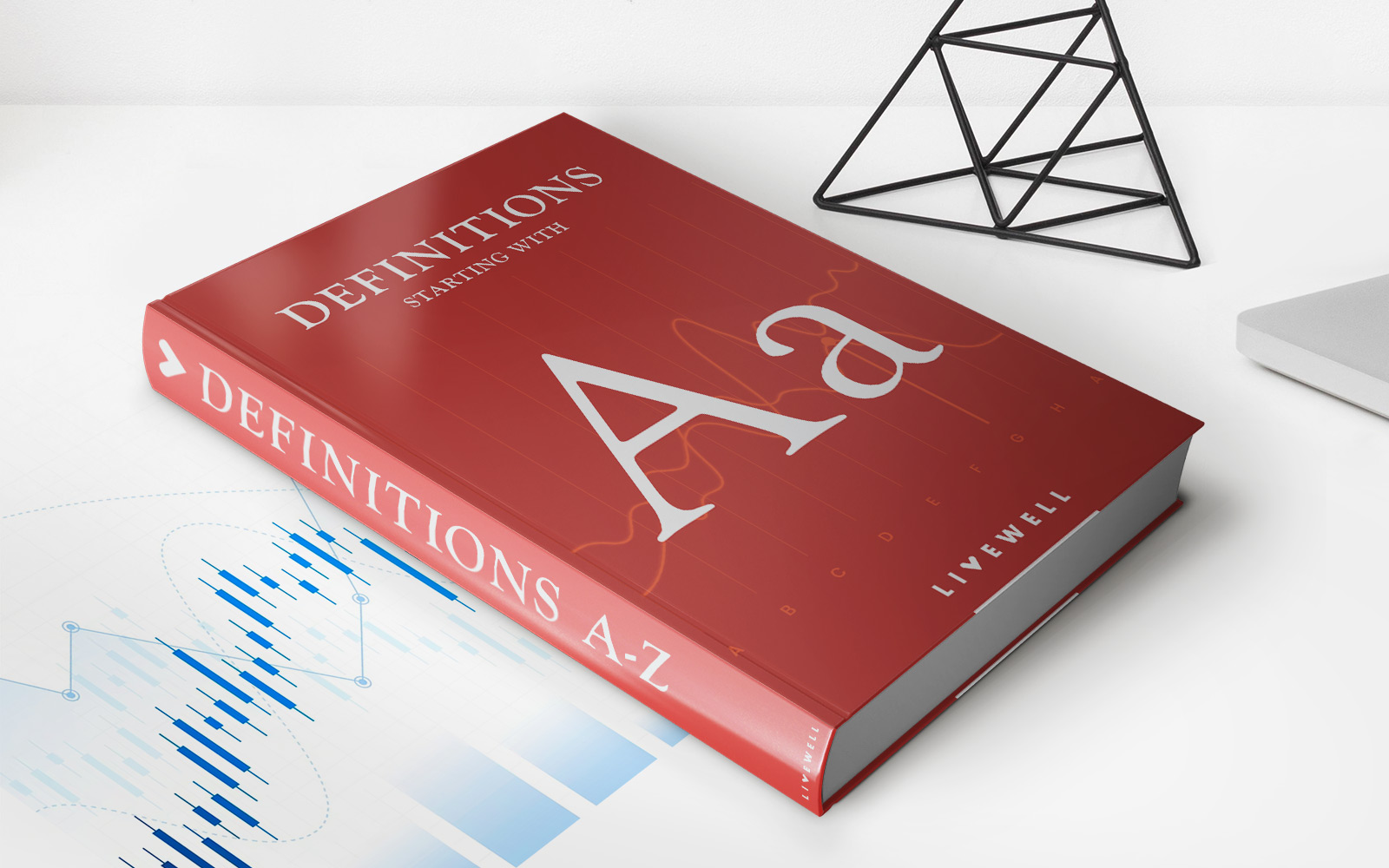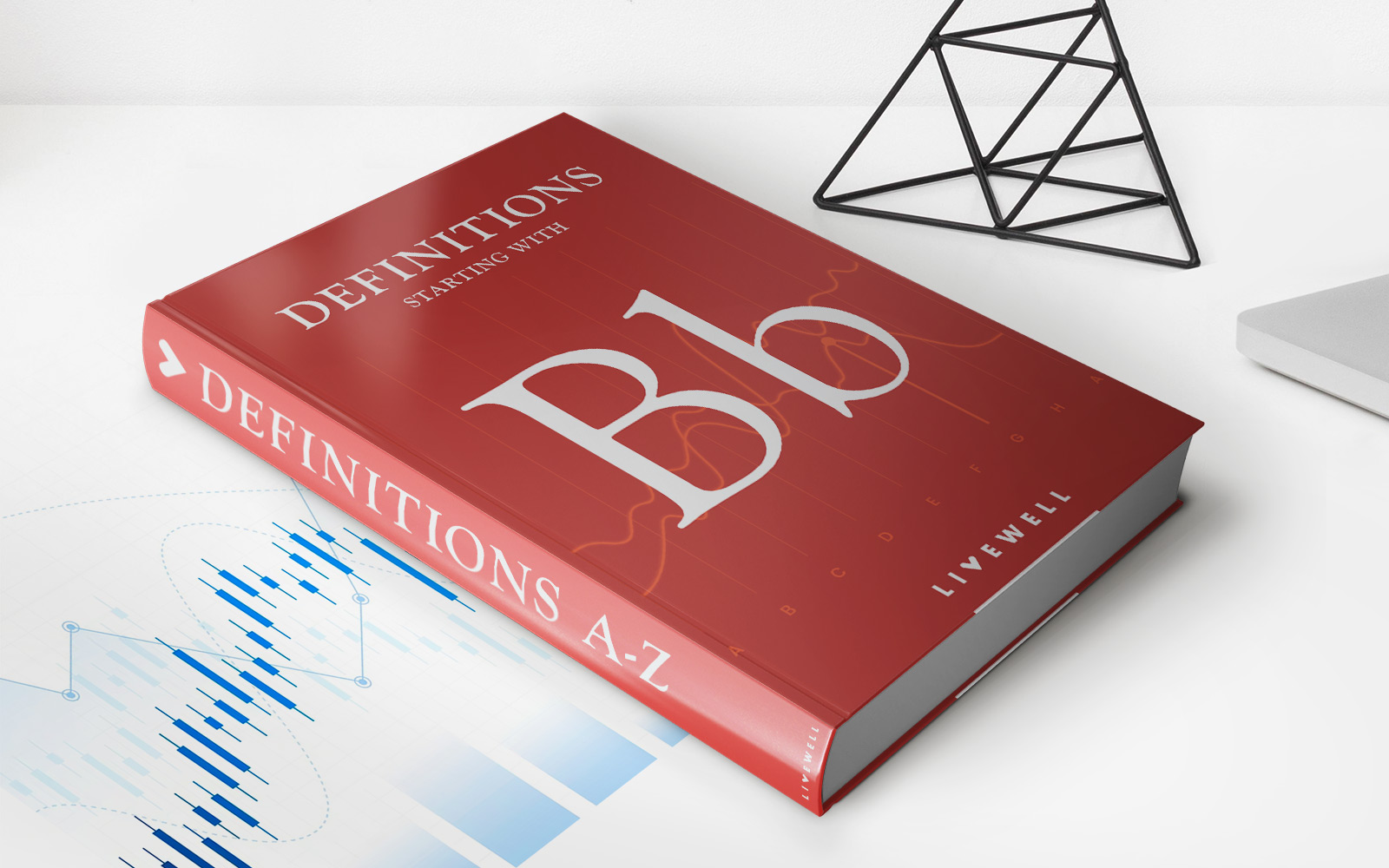

Finance
How To Get A 40K Loan With Bad Credit
Modified: February 21, 2024
Looking for a 40K loan but have bad credit? Learn how to secure the financing you need through smart financial strategies and expert assistance. Finance your goals today!
(Many of the links in this article redirect to a specific reviewed product. Your purchase of these products through affiliate links helps to generate commission for LiveWell, at no extra cost. Learn more)
Table of Contents
- Introduction
- Understanding Bad Credit and Its Impact on Loans
- Exploring Options for Obtaining a 40K Loan with Bad Credit
- Improve Your Credit Score
- Seek a Cosigner
- Explore Credit Unions
- Consider Peer-to-Peer Lending Platforms
- Apply for a Secured Loan
- Research Online Lenders
- Evaluate Personal Loan Options
- Seek Assistance from Nonprofit Organizations
- Consult with a Credit Counselor
- Conclusion
Introduction
Getting a loan can be challenging, especially when you have bad credit. However, if you’re in need of a $40,000 loan and have a less-than-ideal credit score, don’t lose hope just yet. While it may be more difficult to secure a loan with bad credit, it’s not impossible.
Bad credit is typically the result of a history of missed payments, high credit utilization, or bankruptcy. Lenders view individuals with bad credit as higher risk borrowers, which makes it harder to obtain a loan. However, there are still options available for those in need of a significant loan amount, even with a less-than-perfect credit history.
In this article, we will explore various options for obtaining a $40,000 loan with bad credit. Keep in mind that while these options exist, they may come with higher interest rates or stricter terms compared to loans for individuals with good credit. It’s important to carefully consider these options and evaluate your ability to repay the loan in a timely manner.
So, if you’re ready to learn how to secure a $40,000 loan with bad credit, read on to discover the possibilities that may be available to you.
Understanding Bad Credit and Its Impact on Loans
Before we dive into finding options for obtaining a $40,000 loan with bad credit, let’s first understand what bad credit is and how it can impact your ability to secure a loan.
Bad credit is a term used to describe a low credit score, typically below 580 on the FICO scale. This score is based on various factors such as payment history, credit utilization, length of credit history, types of credit, and recent credit inquiries. A low credit score indicates that an individual has a history of not meeting their financial obligations or has a limited credit history.
When it comes to loans, bad credit can have a significant impact. Traditional lenders, such as banks and credit unions, may be hesitant to approve loans for individuals with bad credit due to the higher risk involved. Even if they do approve a loan, it may come with higher interest rates and stricter terms to mitigate the risk.
Having bad credit can limit your borrowing options as well. Conventional loans, such as mortgages or personal loans, may be harder to obtain, and you may need to explore alternative lending sources.
It’s important to note that bad credit is not a permanent situation. With time, effort, and responsible financial habits, you can improve your credit score. Paying bills on time, reducing credit card balances, and avoiding new credit inquiries can gradually rebuild your creditworthiness and make it easier to obtain loans in the future.
Now that you have a better understanding of bad credit and its impact on loans, let’s explore various options for obtaining a $40,000 loan with bad credit.
Exploring Options for Obtaining a 40K Loan with Bad Credit
While having bad credit can make it more challenging to secure a loan, there are still several options you can explore to obtain a $40,000 loan. Here are some potential avenues to consider:
- Improve Your Credit Score: Before applying for a loan, work on improving your credit score by paying bills on time, reducing outstanding debts, and correcting any errors on your credit report. A higher credit score can increase your chances of getting approved for a loan and may result in more favorable terms and interest rates.
- Seek a Cosigner: A cosigner with good credit can increase your chances of getting approved for a loan. When a cosigner agrees to take responsibility for your loan if you default, it reduces the lender’s risk and improves your creditworthiness in their eyes.
- Explore Credit Unions: Credit unions are member-owned financial institutions that often offer more flexible lending criteria compared to traditional banks. They may be more willing to work with individuals who have less-than-perfect credit histories.
- Consider Peer-to-Peer Lending Platforms: Peer-to-peer lending platforms connect borrowers directly with individual investors. These platforms often consider more than just your credit score, taking into account other factors such as your income and financial goals. They may be more willing to provide a loan to individuals with bad credit.
- Apply for a Secured Loan: A secured loan requires collateral, such as a car or property, as security for the loan. By offering an asset as collateral, you reduce the lender’s risk and increase your chances of approval. However, be aware that if you default on the loan, the lender has the right to seize the collateral to recover their losses.
- Research Online Lenders: Online lenders often have more lenient lending criteria compared to traditional banks. They may consider other factors beyond your credit score when evaluating your loan application. Do thorough research to find reputable online lenders that specialize in providing loans to individuals with bad credit.
- Evaluate Personal Loan Options: Personal loans are unsecured loans that can be used for various purposes. While it may be more challenging to get approved for a personal loan with bad credit, it’s worth exploring this option. Be prepared for higher interest rates and stricter terms.
- Seek Assistance from Nonprofit Organizations: Certain nonprofit organizations offer loans or financial assistance to individuals with bad credit. These organizations are designed to help individuals in need and may offer more favorable terms than traditional lenders.
- Consult with a Credit Counselor: If you’re struggling with bad credit, seek guidance from a credit counselor. They can provide valuable advice on improving your credit score and managing your finances. They may also have access to resources and loan options specifically tailored to individuals with bad credit.
Remember, it’s essential to compare the terms, interest rates, and repayment options of different lenders before committing to a loan. Carefully assess your ability to repay the loan and consider the impact it will have on your financial situation.
Now that you have some options to consider, it’s time to explore each one in more detail and determine the best course of action for obtaining a $40,000 loan with bad credit.
Improve Your Credit Score
One of the most effective ways to increase your chances of obtaining a $40,000 loan with bad credit is to improve your credit score. While this may not provide an immediate solution, it can significantly enhance your creditworthiness in the long run.
Start by reviewing your credit report and identifying areas that need improvement. Look for any errors or inaccuracies that may be negatively impacting your credit score. If you find any discrepancies, report them to the credit bureau and provide supporting documentation to have them corrected.
Next, focus on making all of your bill payments on time. This includes credit card bills, loan payments, and utility bills. Late payments have a significant impact on your credit score, so establishing a consistent record of on-time payments is crucial.
In addition to making timely payments, try to reduce your outstanding debts. Paying down credit card balances and other loans will improve your credit utilization ratio, which is the amount of credit you’re using compared to your total available credit. Lowering this ratio demonstrates responsible credit management and can boost your credit score.
It’s important to be patient during this process as improving your credit score takes time. Avoid applying for multiple new credit cards or loans simultaneously, as these inquiries can negatively affect your credit score. Focus on responsible credit management and gradually watch your score improve over time.
Once your credit score has improved, you’ll be in a better position to negotiate more favorable terms and interest rates with lenders. A higher credit score shows that you’re a lower risk borrower, increasing your chances of getting approved for a $40,000 loan with better terms.
Remember, improving your credit score is not a quick fix, but rather a long-term strategy. Develop good financial habits, exercise patience, and consistently monitor your credit to continue building a solid credit history.
In the next section, let’s discuss the option of seeking a cosigner to enhance your chances of obtaining a $40,000 loan with bad credit.
Seek a Cosigner
If you have bad credit but need a $40,000 loan, enlisting the help of a cosigner can significantly improve your chances of getting approved. A cosigner is someone with good credit who agrees to take responsibility for the loan if you default on the payments. Having a cosigner reduces the lender’s risk, making them more willing to approve the loan.
When seeking a cosigner, it’s important to choose someone who has a strong credit history and a good relationship with you. It could be a family member, close friend, or trusted colleague. Keep in mind that by cosigning, they are equally responsible for repaying the loan, and any missed payments or defaults will impact both of your credit scores.
Before approaching a potential cosigner, be transparent about your financial situation and discuss the terms of the loan, including the repayment plan and how you plan to make regular payments. It’s crucial to establish open communication and ensure that your cosigner understands the responsibility and potential risks involved.
Working with a cosigner can not only increase your chances of getting approved but also potentially lead to more favorable loan terms, such as lower interest rates. The cosigner’s good credit history and financial stability can offset the risk associated with your bad credit.
However, it’s important to recognize that asking someone to cosign a loan is a significant request. Make sure you are confident in your ability to meet the financial obligations and honor the agreement. Defaulting on the loan not only affects your credit but also strains the relationship with your cosigner.
Once you’ve found a cosigner and received their agreement, you can begin the loan application process. Research lenders who consider cosigners and compare their terms, interest rates, and repayment options.
Remember that having a cosigner is not a guarantee of approval. Lenders will still evaluate your financial situation and creditworthiness. However, having a cosigner can greatly increase your chances of securing a $40,000 loan even with bad credit.
In the next section, we will explore the option of credit unions for obtaining a loan with bad credit.
Explore Credit Unions
If you have bad credit and need a $40,000 loan, credit unions can be a viable option to consider. Unlike traditional banks, credit unions are member-owned financial institutions that often offer more flexible lending criteria and personalized service.
Credit unions are known for their community focus and willingness to work with individuals who have less-than-perfect credit histories. They take a more holistic approach when evaluating loan applications, considering factors beyond just credit scores. This can give you a better chance of getting approved for a loan despite your bad credit.
To explore credit union loan options, start by researching local credit unions in your area. Look for ones that offer personal loans or other loan products that fit your needs. Visit their websites or speak to a representative to understand their specific lending criteria, interest rates, and repayment terms.
It’s important to note that credit unions have membership requirements, so you may need to become a member before you can apply for a loan. These requirements can include living or working in a specific geographic area, belonging to a certain profession or organization, or having a family member who is already a member. However, credit unions often have more relaxed membership requirements compared to traditional banks.
When applying for a loan at a credit union, be prepared to provide documentation that demonstrates your ability to repay the loan. This can include recent pay stubs, bank statements, and proof of a stable income. Showing that you have a steady income can help compensate for your bad credit in the eyes of the credit union.
Remember, while credit unions may be more lenient in their lending criteria, they still need to ensure that borrowers can repay their loans. Be realistic about the loan amount you are requesting and your ability to make timely payments.
Exploring credit unions can be a great option for getting a $40,000 loan with bad credit. They offer a personalized approach and a willingness to work with individuals who may not meet the stricter requirements of traditional banks.
In the next section, we will delve into the option of peer-to-peer lending platforms for obtaining a loan with bad credit.
Consider Peer-to-Peer Lending Platforms
If you have bad credit and are in need of a $40,000 loan, peer-to-peer lending platforms can provide you with an alternative option to explore. Peer-to-peer lending, also known as P2P lending, connects borrowers directly with individual investors who are willing to lend money.
Unlike traditional lending institutions, P2P lending platforms often take a more holistic approach when evaluating loan applications. They consider factors beyond just credit scores, such as income, employment history, and financial goals. This means that individuals with bad credit may still have a chance of securing a loan through these platforms.
To get started, research reputable P2P lending platforms that operate in your country. Look for platforms that specialize in providing loans to individuals with bad credit or have flexible lending criteria. It’s essential to choose a platform that prioritizes borrower protection, has transparent terms and fees, and provides a platform for investor communication.
When applying for a loan through a P2P lending platform, you’ll typically need to create a profile and provide details about your financial situation, employment, and loan purpose. Some platforms may ask for supporting documentation such as bank statements or tax returns to verify your financial information.
Once your loan application is submitted, it will be reviewed by potential investors on the platform. Investors can choose to fund your loan based on their assessment of your creditworthiness and loan purpose. If your loan is fully funded, you’ll receive the funds and start repaying the loan according to the agreed-upon terms.
One significant advantage of P2P lending platforms is that they often offer more competitive interest rates compared to traditional lenders for individuals with bad credit. The interest rates may vary depending on your creditworthiness and the terms of the loan.
It’s important to note that while P2P lending can be a viable option for obtaining a $40,000 loan with bad credit, it’s still crucial to carefully evaluate the terms and conditions. Read through the platform’s policies, fees, and repayment terms to ensure that they align with your financial goals and budget.
Now that we have explored the option of P2P lending, let’s move on to the idea of applying for a secured loan.
Apply for a Secured Loan
If you have bad credit and need a $40,000 loan, one option to consider is applying for a secured loan. A secured loan requires you to provide collateral, such as a vehicle, property, or savings account, to secure the loan. The collateral serves as a form of protection for the lender in case you default on the loan.
By offering collateral, you reduce the lender’s risk and increase your chances of getting approved for a loan, even with bad credit. The lender can seize the collateral and sell it to recover their losses if you fail to repay the loan. This security allows lenders to offer loans to individuals with lower credit scores.
When applying for a secured loan, it’s important to carefully assess your ability to repay the loan, as defaulting could result in the loss of the collateral. Consider your financial situation, income stability, and future repayment obligations before committing to a secured loan.
Secured loans can be obtained from traditional banks, credit unions, or online lenders. Compare the interest rates, terms, and fees from different lenders to find the most favorable option for your situation.
Keep in mind that the value of your collateral will typically determine the loan amount you can borrow. However, it’s essential to borrow only what you can comfortably repay to avoid financial strain in the future.
Applying for a secured loan requires gathering the necessary documentation, such as proof of ownership for the collateral, income verification, and identification. Prepare these documents in advance to streamline the loan application process.
It’s important to note that while secured loans provide an opportunity to obtain a $40,000 loan with bad credit, they come with certain risks. Make sure you fully understand the terms and conditions of the loan before signing any agreement. Be diligent in making your loan payments on time to protect your collateral and maintain a positive credit history.
Now that we’ve explored secured loans, let’s move on to discussing the option of researching online lenders for obtaining a loan with bad credit.
Research Online Lenders
If you have bad credit and need a $40,000 loan, exploring online lenders can be a valuable option. Online lenders often have more relaxed lending criteria compared to traditional banks, making them more willing to work with individuals with bad credit.
When researching online lenders, it’s essential to focus on reputable and trustworthy institutions. Look for lenders that specialize in providing loans to individuals with bad credit or have flexible eligibility requirements.
Start by comparing interest rates, loan terms, and fees from different online lenders. Pay close attention to the annual percentage rate (APR), which includes both the interest rate and any additional costs associated with the loan.
Reading reviews and testimonials from previous borrowers can also provide insights into the lender’s credibility and customer service. Look for lenders with positive feedback and a history of fair lending practices.
When applying for a loan with an online lender, you’ll typically need to complete an online application form. This form will ask for your personal information, employment details, income documentation, and information about the loan purpose.
After submitting your loan application, the online lender will review your information and assess your creditworthiness. They may request additional documentation or verification before making a decision.
It’s important to carefully review the terms and conditions of the loan before accepting any offers from online lenders. Pay attention to the repayment schedule, late payment penalties, and any other applicable fees. Ensure that the loan terms align with your budget and financial goals.
While online lenders can provide access to loans for individuals with bad credit, it’s crucial to exercise caution. Be aware of potential scams or predatory lending practices. Verify the legitimacy of the lender and never provide personal or financial information to unsecured or suspicious websites.
Researching and comparing online lenders can help you find the best loan options for your specific needs. Take the time to perform due diligence and choose a reputable online lender that offers reasonable terms and conditions.
Now that we’ve explored online lenders, let’s move on to evaluating personal loan options for obtaining a $40,000 loan with bad credit.
Evaluate Personal Loan Options
If you have bad credit and need a $40,000 loan, evaluating personal loan options can be a beneficial approach. Personal loans are unsecured loans that can be used for various purposes, such as debt consolidation, home improvements, or unexpected expenses.
While it may be more challenging to get approved for a personal loan with bad credit, it’s worth exploring this option. Many online lenders and financial institutions offer personal loans specifically tailored to individuals with lower credit scores.
When evaluating personal loan options, consider the following factors:
- Interest Rates: Compare the interest rates from different lenders to find the most competitive option. Remember that individuals with bad credit may be subject to higher interest rates compared to those with good credit. However, taking the time to shop around can help you find more affordable rates.
- Loan Terms: Assess the repayment terms offered by each lender. Look for flexibility in the repayment period, ensuring that it aligns with your budget and financial capabilities. Some lenders may offer longer repayment periods, but be aware that this can result in more interest paid over time.
- Fees: Be mindful of any upfront fees, origination fees, or prepayment penalties associated with the loan. These additional costs can impact the overall affordability of the loan, so factor them into your decision-making process.
- Lender Reputation and Customer Service: Research the reputation of the lenders you’re considering. Read reviews and testimonials from previous borrowers to assess their level of customer service and satisfaction with the loan process.
Submitting loan applications with multiple lenders can result in hard inquiries on your credit report, which may further lower your credit score. To avoid this, consider using prequalification tools offered by some lenders. These tools allow you to check your eligibility and rates without undergoing a hard credit check.
It’s important to carefully review the terms and conditions of any personal loan offers before accepting them. Ensure that the monthly payments fit comfortably within your budget and that you can make consistent, on-time payments to establish a positive credit history.
If you’re having difficulty obtaining a personal loan on your own, consider applying with a creditworthy cosigner to increase your chances of approval.
As you evaluate personal loan options, remember that responsible borrowing and repayment are crucial to rebuilding your credit. Making timely payments can have a positive impact on your credit score and improve your financial standing in the long run.
Now that we’ve explored personal loan options, let’s move on to the option of seeking assistance from nonprofit organizations for obtaining a loan with bad credit.
Seek Assistance from Nonprofit Organizations
When navigating the challenge of obtaining a $40,000 loan with bad credit, seeking assistance from nonprofit organizations can be a valuable option to explore. These organizations are dedicated to helping individuals in need and often provide financial assistance or loans specifically designed for those with less-than-perfect credit.
Nonprofit organizations may offer loans with more favorable terms and lower interest rates compared to traditional lenders. They understand that individuals facing financial difficulties may have limited borrowing options, and they aim to provide support and empowerment.
Start by researching local or national nonprofit organizations that offer loan programs or financial assistance. Look for organizations that focus on serving individuals with bad credit or those facing financial challenges.
When applying for a loan from a nonprofit organization, be prepared to provide detailed information about your financial situation, income, and loan purpose. They may also request documentation such as pay stubs, tax returns, or proof of employment.
It’s important to note that nonprofit organizations have limited funds and resources, and their loan programs may have specific eligibility criteria and limited availability. Therefore, it’s advisable to reach out to multiple organizations to increase your chances of finding a suitable loan option.
Since nonprofit organizations prioritize community welfare over profit, their focus may extend beyond lending. They may provide additional resources, such as financial counseling or educational programs, to help individuals improve their financial literacy and manage their money effectively.
While seeking assistance from nonprofit organizations can be a viable option, it’s crucial to conduct thorough research and verify the legitimacy and reputation of the organization. Look for organizations that are registered and recognized within your country or region.
Now that we’ve explored the option of seeking assistance from nonprofit organizations, let’s move on to the idea of consulting with a credit counselor for additional guidance and support.
Consult with a Credit Counselor
If you’re struggling with bad credit and need a $40,000 loan, seeking guidance from a credit counselor can provide valuable support and advice. Credit counselors are trained professionals who specialize in helping individuals manage their finances, improve their credit, and navigate challenging financial situations.
A credit counselor can assess your current financial situation, evaluate your credit report, and provide personalized recommendations to improve your credit score. They can help you understand the factors contributing to your bad credit and offer strategies for addressing those issues.
During a credit counseling session, the counselor will work with you to create a budget, develop a debt repayment plan, and establish financial goals. They can also offer guidance on improving your credit habits, such as making timely payments, reducing debt, and managing your credit utilization.
In addition to providing financial guidance, credit counselors may be able to connect you with resources and loan options specifically tailored to individuals with bad credit. They often have relationships with nonprofit organizations, lenders, and other financial institutions that can offer assistance in obtaining a loan.
It’s important to choose a reputable credit counseling agency that is accredited and certified by recognized organizations. Look for agencies affiliated with the National Foundation for Credit Counseling (NFCC) or the Financial Counseling Association of America (FCAA).
During your consultation with a credit counselor, be prepared to discuss your financial goals, provide documentation of your income and expenses, and share details about your current debts and credit situation. This information will help the credit counselor develop a personalized plan to improve your credit and explore potential loan options.
Keep in mind that credit counseling is not a quick fix solution. It requires commitment, discipline, and diligence to implement the strategies and recommendations provided by the counselor. However, by working with a credit counselor, you’ll gain valuable knowledge and support to improve your financial situation in the long run.
Now that we’ve explored consulting with a credit counselor, it’s time to summarize the various options we’ve discussed for obtaining a $40,000 loan with bad credit.
Conclusion
Obtaining a $40,000 loan with bad credit may seem challenging, but there are options available to explore. By understanding your bad credit and its impact on loans, you can navigate the process with more confidence.
Improving your credit score should be the first step. Focus on making timely payments, reducing debts, and correcting any errors on your credit report. This will enhance your creditworthiness and increase your chances of securing a loan on favorable terms.
Seeking a cosigner can also be beneficial, as it provides added assurance to lenders. A creditworthy cosigner can help you secure a loan and potentially secure more favorable loan terms.
Credit unions and online lenders are alternative sources to consider. Credit unions often have more lenient lending criteria, while online lenders offer more flexibility and convenience. Research reputable institutions and compare their interest rates, terms, and fees.
If you have collateral, applying for a secured loan can increase your chances of approval. Remember to assess your ability to repay the loan to avoid risking your collateral.
Nonprofit organizations and credit counseling agencies can offer specialized loan programs and financial guidance. Consult with them to explore unique options tailored to individuals with bad credit and receive professional advice to manage your finances effectively.
Remember that responsible borrowing and repayment are essential for rebuilding your credit. Make timely payments, establish a budget, and manage your debts effectively to maintain a positive credit history.
While obtaining a loan with bad credit may come with higher interest rates and stricter terms, it’s important to view it as an opportunity to improve your credit. With patience, diligence, and smart financial choices, you can work towards strengthening your creditworthiness.
Ultimately, it’s crucial to evaluate the options available, consider your financial situation, and choose the path that best fits your needs and goals. By taking proactive steps and exploring various avenues, you can increase your chances of obtaining a $40,000 loan and work towards financial stability.














